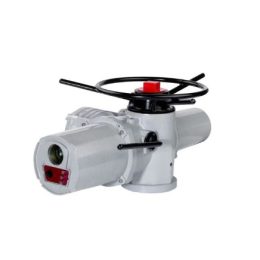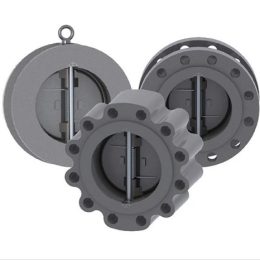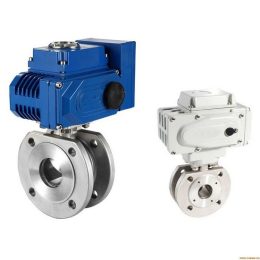Understanding Trunnion-Mounted Ball Valves

Understanding Trunnion-Mounted Ball Valves
Trunnion-mounted ball valves are high-performance valves designed to provide reliable and long-lasting service in a wide range of industrial applications. They are commonly used in oil and gas, petrochemical, power generation, and other industries that require precise control and regulation of fluid flow. This article provides a comprehensive overview of trunnion-mounted ball valves, including their construction, working principles, advantages, and common applications.
Construction and Design of Trunnion-Mounted Ball Valves
Trunnion-mounted ball valves consist of a ball-shaped disc that rotates around a fixed axis (trunnion) to control the flow of fluid. The valve body comprises two main parts, the upper and lower halves, which are bolted together. The ball is supported by two or more trunnions that are located on opposite sides of the valve. The trunnions are mounted in bearings that allow the ball to rotate smoothly.
The ball itself is usually made of metal or a composite material, such as ceramic or polymer. The seat of the valve is made of an elastic material that allows it to deform and create a tight seal against the ball when the valve is closed. The valve stem is connected to the ball and extends out of the valve body to allow for manual or automated operation. Trunnion-mounted ball valves can be designed to operate at high pressures and temperatures, making them suitable for a wide range of applications.
Working Principles of Trunnion-Mounted Ball Valves
Trunnion-mounted ball valves operate on the principle of quarter-turn rotation. The valve is opened or closed by rotating the ball by 90 degrees around its axis. When the valve is closed, the ball is pressed against the seat by the fluid pressure, creating a tight seal. When the valve is opened, the ball rotates, allowing the fluid to flow through the valve. The trunnions support the ball and prevent it from being pushed out of position by the fluid pressure.
Trunnion-mounted ball valves can be designed to operate manually or using an actuator. They can be classified into two types: floating ball and trunnion-mounted ball valves. In a floating ball valve, the ball is not fixed to the trunnions, and the seat provides the necessary support. In a trunnion-mounted ball valve, the ball is supported by the trunnions, which reduces the load on the seat and extends its service life.
Advantages of Trunnion-Mounted Ball Valves
Trunnion-mounted ball valves offer several advantages over other types of valves. They have a low operating torque, which makes them easier to operate manually or using an actuator. They provide a tight seal, even at high pressures and temperatures, reducing the risk of leaks and improving safety. They are also less prone to wear and tear, thanks to the support provided by the trunnions, which reduces the load on the seat. Trunnion-mounted ball valves are suitable for a wide range of applications, including those that require a high flow rate, high pressure, or high temperature.
Common Applications of Trunnion-Mounted Ball Valves
Trunnion-mounted ball valves are commonly used in the oil and gas industry, where they are used to control the flow of crude oil, natural gas, and other fluids. They are also used in the petrochemical industry, power generation, and other industries that require precise control and regulation of fluid flow. Trunnion-mounted ball valves are suitable for a wide range of applications, including those that require a high flow rate, high pressure, or high temperature.
Maintenance and Troubleshooting of Trunnion-Mounted Ball Valves
Trunnion-mounted ball valves require regular maintenance to ensure their reliable and long-lasting service. The valve should be inspected periodically to check for leaks, corrosion, and other signs of wear and tear. The seat should be replaced if it shows signs of damage, and the trunnions should be lubricated to prevent them from seizing up. In case of valve failure, troubleshooting should be carried out to identify the root cause and fix it promptly.
Understanding Trunnion-Mounted Ball Valves
Trunnion-mounted ball valves are high-performance valves that offer several advantages over other types of valves. They are suitable for a wide range of applications, including those that require a high flow rate, high pressure, or high temperature. Trunnion-mounted ball valves require regular maintenance to ensure their reliable and long-lasting service. By understanding the construction, working principles, advantages, and common applications of trunnion-mounted ball valves, you can make an informed decision about their use in your industrial operations.



